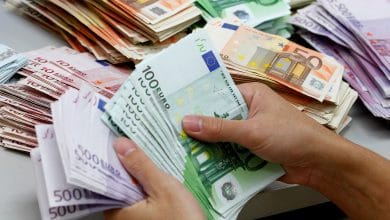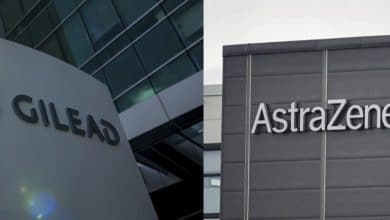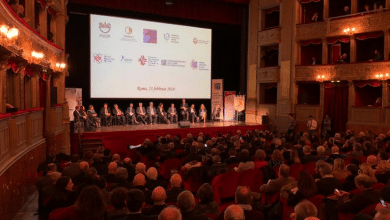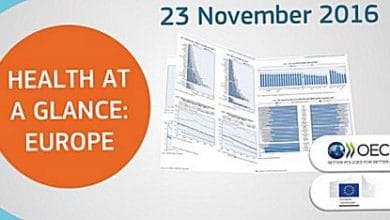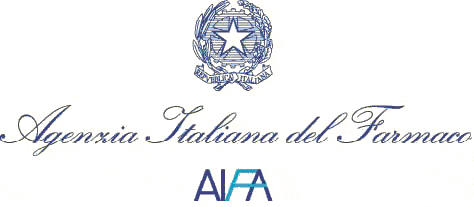
Aifa, the territorial one breaks through the 0.5%. 26 billion spent on drugs in 2013, 436 per citizen. Prescriptions of equivalents are increasing, biosimilars are improving. Minister Lorenzin, useful data for programming
The Italian hospital pharmaceutical expenditure has broken through the ceiling set at 3.5% of the National Health Fund (equal to 3,725 million euros) of 20.5% (the equivalent of 765 million euros more) in 2013. This can be seen from the report Osmed presented in Rome by the Italian Medicines Agency (Aifa). [You see: https://www.fedaiisf.it/Start/HDefault.aspx?Newsid=9515]
In all, hospital pharmaceutical expenditure amounted to 4,489 million euros, up on 2012 (4,408 million euros with unchanged expenditure composition at the current ceiling, equal to +1.8%). Almost all Regions breached the ceiling of 3.5% of hospital pharmaceutical expenditure in 2013 with the exception of Sicily, Trento and Valle d'Aosta. As regards the territorial pharmaceutical expenditure in 2013, it is equal to 12,141 million euros, with an overall deficit of 62.9 million euros compared to the programmed financing (+0.5%) set at 11.35% of the Fsn. However, this expense item is down on the previous year (-0.8% in correspondence with the current ceiling).
The Regions that have broken through the 11.35% ceiling are Sardinia, Sicily, Puglia, Calabria, Lazio, Campania, Abruzzo, Marche and Molise.
Barbara Di Chiara – 15 July 2014 – PharmaKronos
Osmed, 26 billion spent on drugs in 2013, 436 per citizen 
Total Italian pharmaceutical expenditure, public and private, in 2013 amounted to 26 billion euros (+2.3% compared to 2012), of which 75.4% was reimbursed by the NHS. On average, for each Italian citizen, the cost of medicines was around 436 euros. This is what emerges from the Osmed 2013 report of the Italian Medicines Agency (Aifa), presented in Rome.
The overall territorial pharmaceutical expenditure, public and private, increased by +1.7% compared to 2012 and amounted to 19,708 million euros. Territorial public spending, including the cost of medicines dispensed under an agreed assistance regime and in direct distribution and on behalf of class A, amounted to 11,866 million euros (+0.4%).
The expenditure to be paid by citizens, including the citizen's co-payment, the private purchase of category A, the expense for class C drugs with prescription and self-medication, recorded an increase of +3.8% compared to 2012.
Expenditure for the purchase of medicines by public health structures (hospitals, local health authorities, Irccs) amounted to 8.4 billion euros (141.2 euros per capita), with an increase of +6 compared to 2012, 2%.
The regional public expenditure disbursed under the agreed assistance regime amounted to 8,863 million euros against 608 million prescriptions issued.
July 15, 2014 – PharmaKronos
 Minister Lorenzin, useful data for programming
Minister Lorenzin, useful data for programming
“Pharmaceutical expenditure represents 1.7% of GDP, with 26.1 billion euros, of which almost 80% reimbursed by the NHS. On average, on a national level, every citizen takes almost 1.7 doses of medicine every day and the consumption of medicines in Italy is constantly growing”. This was recalled in a message sent on the occasion of the presentation of the 2013 Osmed report to AIFA, by the Minister of Health, Beatrice Lorenzin.
"Effective planning - says Lorenzin - is an essential tool in the protection of health, especially in a context like the Italian one which has set itself high protection objectives: it is for this reason that in the Pact for health the activities of programming. At a time when it is essential not to waste limited resources, while optimizing processes at the same time, we are called to acquire the most widespread and precise data, to measure processes, compose benchmarks and quickly govern the processes themselves. In this process, the appropriateness indicators of use of medicines represent an innovative and essential tool precisely for planning purposes”.
July 15, 2014 – PharmaKronos
 Osmed: prescriptions of equivalents are increasing, biosimilars are improving
Osmed: prescriptions of equivalents are increasing, biosimilars are improving
Equivalents growing, but still low compared to other countries, with an incidence of 14.9% on total expenditure in 2013, pharmaceutical expenditure at risk of explosion in the next few years and a pharmacovigilance system which improves but still sees low reports from general practitioners. These are some aspects of pharmaceutical expenditure highlighted in the 2013 Osmed report and on which the general manager of Aifa, Luca Pani, expresses concern: this year for the first time the territorial pharmaceutical sector has not been kept under control but the greatest fears concern the fact that there are many drugs on the way, for cancer, infectious diseases starting with hepatitis, HIV and the central nervous system, and the forecast is for an exponential increase in costs for pharmaceutical expenditure. As regards the data brought to light by the report, «in 2013 the prescription of expired patent medicines accounted for 64.3% of doses and 41.5% of net expenditure (with an increase of +3.8% compared to 2012) . Specifically, generic medicines represent 14.9% of total expenditure, up on the 13.4% incidence in 2012». "Both expenditure and consumption of expired patent drugs are on the increase compared to 2012" and "in the last year, some molecules with a high impact on approved pharmaceutical expenditure have lost their patent coverage: irbesartan and hydrochlorothiazide and rizatriptan". Furthermore, "there is still ample room for improvement in the use of biosimilars, even if their use is increasing, with positive effects on expenditure: a decrease in expenditure of -16.6% compared to 2012 was recorded in the of epics". «The Regions with the highest incidence of the consumption of expired patent medicines were Umbria (67.3%) followed by Emilia Romagna (66.6%) and Tuscany (66.0%), while Sardinia (61.0%) 3%), the Autonomous Province of Trento (61.3%) and Lazio (61.4%) are those in which the lowest consumption has been recorded». In general, "in 2013, every Italian consumed an average of 1.7 doses of medicines per day (1,679 doses per day for every 1,000 inhabitants) with 70.4% of these medicines paid for by the National Health Service". In this context «total pharmaceutical expenditure, public and private, amounted to 26.1 billion euros (+2.31TP3compared to 2012)». «In the context of agreed assistance, every Italian consumed an average of just over one dose a day (1,031.5 Ddd/1000 inhab. per day), up on the previous year by +2.5%, while in terms of packages an increase of +2.2% was recorded (over 1 billion packages in 2013, corresponding to 18.7 packages per capita). The number of prescriptions increased by 2.5% compared to last year and reached 608 million prescriptions». And, "as far as public health facilities are concerned, 150.6 doses of medicines were dispensed per day for every 1,000 inhabitants, a decrease of -13.8% compared to the previous year". Furthermore, «the data relating to medicines supplied at the expense of the National Health Service through public and private pharmacies and public facilities and at the expense of the citizen, show that in 2013 medicines for the cardiovascular system were confirmed as the category most consumed by Italians (525 Ddd per 1,000 inhabitants per day) and at greater expense (4,194 million euros, 70.3 euros per capita)». Another interesting figure: in 2013 «the consumption of antibiotics increased by +3.5%, while spending decreased by -3.4%», but «high levels of inappropriateness in their use continue to be observed. Inappropriate use exceeds 20% in all clinical conditions with particular impact for laryngotracheitis (49.3%) and uncomplicated cystitis (36.3%)». And then there is pharmacovigilance: «during 2013, 40,957 reports of suspected adverse drug reactions were included in the National Pharmacovigilance Network (RNF). The number of reports is growing: in 2001 the reports included in the Network were 131 per million inhabitants and in 2013 compared to 2012 an increase of +41% was recorded. More than half of the reports came from hospital doctors (52%), followed by those from pharmacists (16%) and specialists (9%). Reports from general practitioners are still low (7%). A significant increase in reports from pharmaceutical companies (+729%) and patients (+268%) was recorded.
Francesca Giani – Tuesday, July 15th 2014 – Doctor33
Ed.: Osmed report 2013
TO

